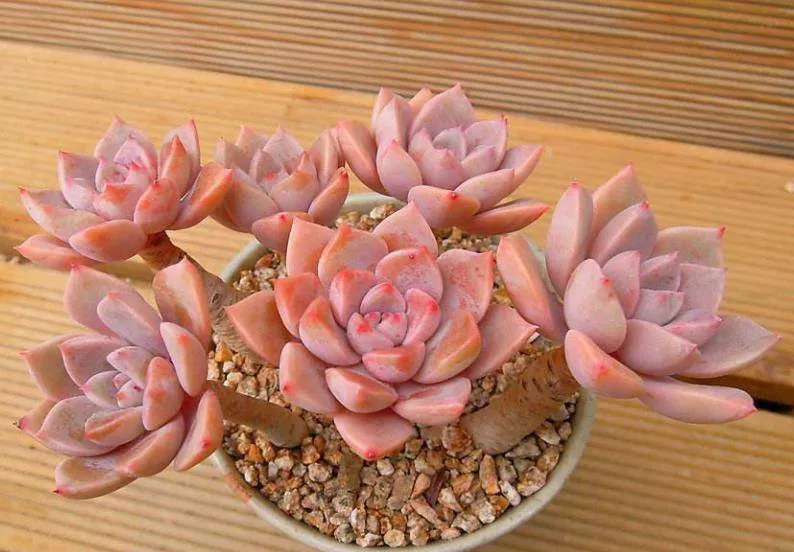Succulents, with their striking shapes and low-maintenance care requirements, have become increasingly popular as indoor plants. However, one common misconception is that succulents can thrive indoors without sunlight. In this article, we will explore the possibility of keeping succulents indoors without direct sunlight, how to care for indoor succulents, and help you create a healthy and happy indoor succulent environment.
1. Understanding the Sunlight Needs of Succulents
Succulents are naturally adapted to thrive in bright, sunny conditions. In their native habitats, they receive ample sunlight, which is essential for their growth and survival. Succulents have evolved to store water in their leaves, stems, or roots, allowing them to withstand long periods of drought. However, this adaptation also makes them susceptible to issues when grown in low-light conditions.
2. Can Succulents Live Indoors Without Sunlight?
While succulents prefer bright sunlight, it is possible to grow them indoors with some adjustments to their care routine. Most succulents can tolerate moderate to bright indirect light indoors, but they will not thrive or grow as vigorously as they would outdoors in full sunlight. If you have limited access to direct sunlight, consider the following options:
Choosing Low-Light Tolerant Succulents: Some succulent species are more tolerant of lower light conditions than others. Look for varieties like Haworthias, Gasterias, and Sansevierias, which can adapt better to indoor environments.
Supplemental Lighting: If you cannot provide sufficient natural light, consider using artificial grow lights to supplement the light requirements of your indoor succulents. LED grow lights are a popular choice for providing the right spectrum of light for plant growth.
3. Best Indoor Placement for Succulents
When growing succulents indoors, proper placement is essential to give them the best chance of thriving. Follow these guidelines for the ideal indoor succulent placement:
Bright Indirect Light: Place your succulents in a location that receives bright, indirect light for several hours a day. East or west-facing windows are typically the best spots for indoor succulents, as they get the morning or afternoon sun without the intense midday heat.
Avoid Dark Corners: Keep your succulents away from dark corners or areas with little to no natural light. Insufficient light can lead to stretching or elongation of the succulent stems, which compromises their appearance and health.
Rotate the Plants: To ensure even growth and prevent one side from receiving more light than the other, rotate your succulent pots regularly.
4. Tips for Indoor Succulent Care
Successfully growing succulents indoors requires attention to their specific care needs. Follow these tips to create an optimal environment for your indoor succulents:
Potting Mix: Use a well-draining potting mix specifically designed for succulents or create your own by mixing potting soil with coarse sand and perlite. Good drainage is crucial for preventing root rot.
Watering: Succulents are drought-tolerant plants, and overwatering is one of the most common causes of succulent problems. Allow the soil to dry out completely between waterings, and water only when the top inch of the soil feels dry.
Avoid Watering the Leaves: When watering succulents, avoid getting water on the leaves, especially for plants with delicate or fuzzy leaves. Wet leaves can lead to rot or fungal issues.
Temperature and Humidity: Most succulents prefer warm temperatures ranging from 65°F to 80°F (18°C to 27°C). Indoor succulents generally adapt well to average room humidity levels.
Fertilizing: Fertilize sparingly, as succulents do not require frequent feeding. Use a balanced, diluted fertilizer specifically formulated for succulents during the growing season, typically from spring to early fall.
5. Signs of Insufficient Light
Even with the best care, succulents kept indoors without sufficient light may exhibit signs of stress or lack of vigor. Some common signs of insufficient light include:
Stretching or Elongation: Succulent stems may become stretched or leggy as they try to reach for more light.
Fading Colors: Succulents may lose their vibrant colors and appear pale or faded when not receiving enough light.
Leaning Toward Light Sources: Succulents will often lean or bend toward windows or light sources in an attempt to capture more sunlight.
6. Adjusting Lighting for Indoor Succulents
If you notice signs of insufficient light in your indoor succulents, consider the following adjustments:
Move Closer to Light Sources: If possible, move your succulents closer to windows or light sources to provide them with more natural light.
Use Grow Lights: Consider using artificial grow lights to supplement the light requirements of your succulents. Position the grow lights above the plants and set timers to mimic natural daylight hours.
Prune Leggy Growth: If your succulents have become leggy due to insufficient light, you can prune the stretched stems to encourage new, more compact growth.
7. Preventing Sunburn
While succulents need sufficient light, they can also be susceptible to sunburn, especially if abruptly exposed to intense sunlight. Prevent sunburn by following these steps:
Acclimate Gradually: When transitioning indoor succulents to outdoor settings or placing them in a sunnier location, do so gradually over several days. This allows the plants to adjust to the increased light levels without risk of sunburn.
Provide Shade: If your succulents are outdoors and exposed to intense midday sun, provide them with some shade during the hottest part of the day, especially in the summer months.
8. Seasonal Considerations
Indoor succulents may experience changes in light conditions throughout the year due to shifting sunlight angles and daylight hours. Be observant and adjust the placement of your succulents accordingly to ensure they receive the right amount of light each season.
Conclusion
While succulents prefer bright sunlight, it is possible to grow them successfully indoors with some adjustments to their care. By selecting low-light tolerant succulent varieties, using supplemental grow lights, and providing the right indoor placement, you can create a thriving indoor succulent garden. Paying attention to their specific care needs, preventing sunburn, and adjusting light conditions as needed will help you maintain healthy and vibrant indoor succulents that will bring joy and beauty to your living spaces.


